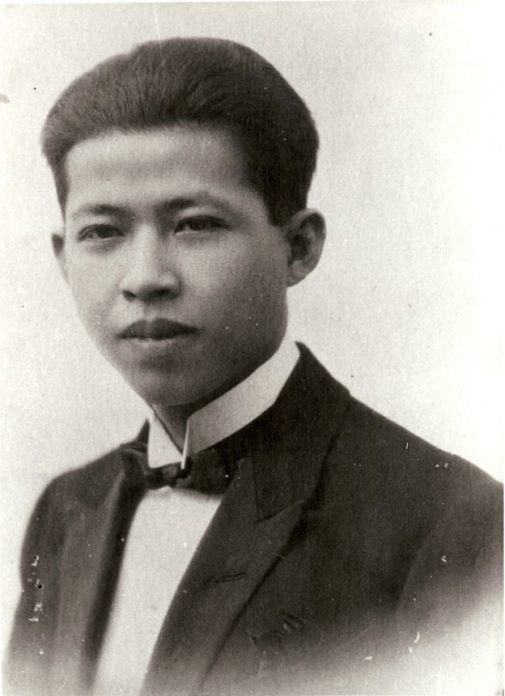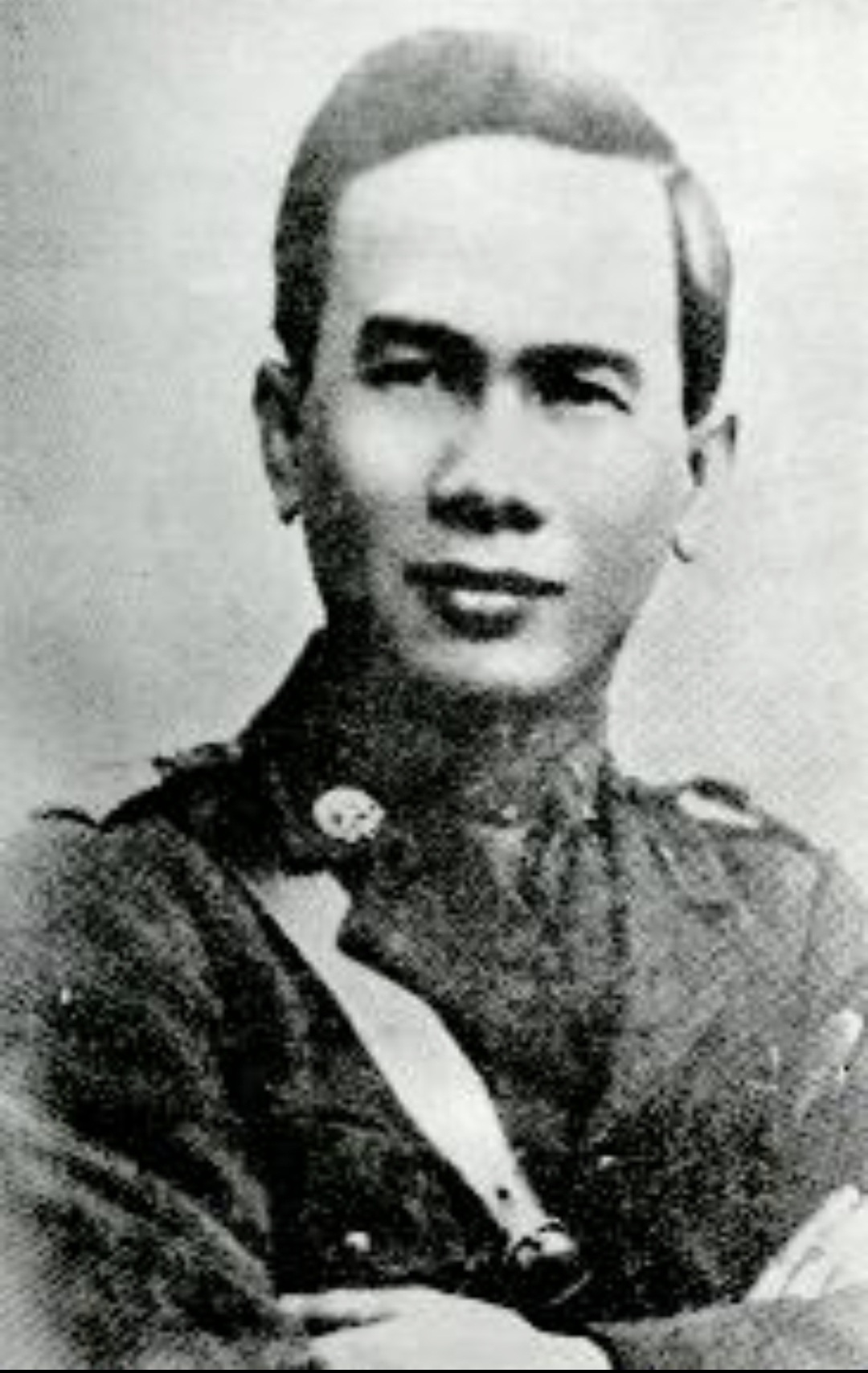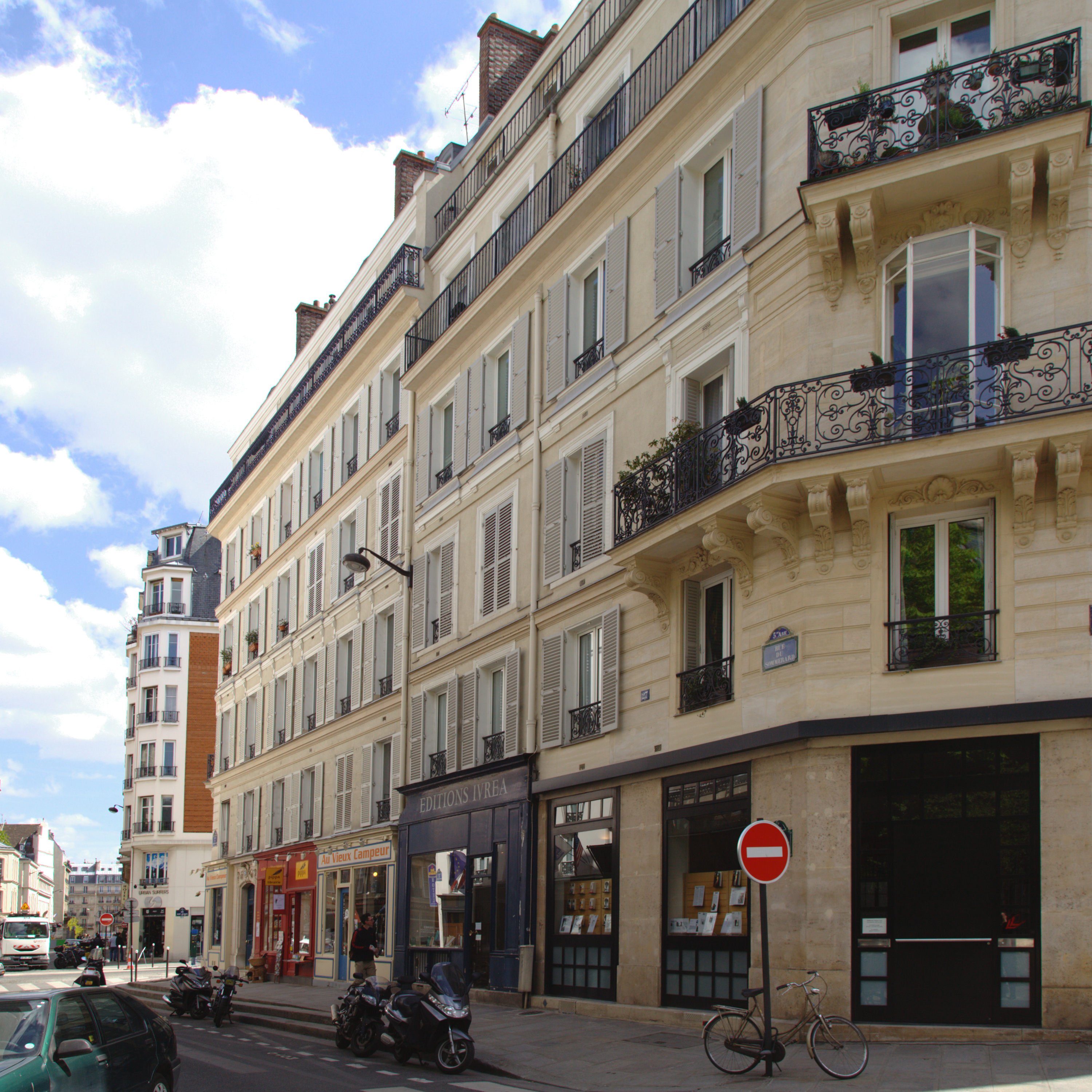|
Royal Plaza (Bangkok)
The Royal Plaza, or formally Dusit Palace Plaza (; ), and also known among Thais as Equestrian Statue Plaza (; ), is an important public square in the Dusit Palace, palace and government quarter of Bangkok, the capital of Thailand. It is located in front of Ananta Samakhom Throne Hall in Dusit Palace, Dusit District, Bangkok, which was the former reception hall of the palace where King Chulalongkorn (Rama V; r. 1868–1910) once lived, and was later used as the first parliament building. At the center of the plaza is the Equestrian statue of King Chulalongkorn, the "Great beloved king". The square is rectangular shaped, about 500 metres long and 150 metres wide. The Royal Plaza forms the northeastern end of Ratchadamnoen Avenue that presents a 1.5-km long vista towards it and links the plaza with the Sanam Luang and the Grand Palace in Bangkok's old town. Next to the plaza is Suan Amporn Park, the venue of the annual Red Cross Fair. On the northern corner of the square is Amphorn ... [...More Info...] [...Related Items...] OR: [Wikipedia] [Google] [Baidu] |
Chulalongkorn University
Chulalongkorn University (CU; ; , ) is a public university, public Autonomous university, autonomous research university in Bangkok, Thailand. The university was originally founded during King Chulalongkorn's reign as a school for training royal pages and civil servants in 1899 (B.E. 2442) at the Grand Palace. It was later established as a national university in 1917, making it the oldest institute of higher education in Thailand. During the reign of Chulalongkorn's son, King Vajiravudh, the Royal Pages School became the Civil Service College of King Chulalongkorn. The Rockefeller Foundation was instrumental in helping the college form its academic foundation. On 26 March 1917, King Vajiravudh renamed the college "Chulalongkorn University". Chulalongkorn University is one of the National Research Universities and supported by the Office of Nation Education Standards and Quality Assessment of Thailand. Moreover, CU is the only Thai university which is a member of Association o ... [...More Info...] [...Related Items...] OR: [Wikipedia] [Google] [Baidu] |
Sarit Thanarat
Sarit Thanarat (also spelled Dhanarajata; ; born Siri (); 16 June 1908 – 8 December 1963) was a Thai politician and military commander. He served as commander-in-chief of the Royal Thai Army (from 1954) and as Minister of Defense during Plaek Phibunsongkhram's premiership. In 1957, he became chief of a military junta after leading a coup in which Phibun was overthrown. Sarit lasted the de facto prime minister only five days before was replaced by Pote Sarasin, but assumed power again as the head of the Revolutionary Council after 1958 coup and then as the eleventh Prime Minister of Thailand in February 1959 until his death in 1963. Born in Phra Nakhon (now Bangkok) and raised in Mukdahan, Sarit graduated from the Chulachomklao Royal Military Academy in 1928 and began his military career as a second lieutenant in the 2nd Infantry Division. He first gained recognition during the Boworadet Rebellion, where he commanded government forces under Plaek Phibunsongkhram. D ... [...More Info...] [...Related Items...] OR: [Wikipedia] [Google] [Baidu] |
Siamese Revolution Of 1932
The Siamese revolution of 1932 or Siamese coup d'état of 1932 ( or ) was a coup d'état by the People's Party which occurred in Siam on 24 June 1932. It ended Siam's centuries-long absolute monarchy rule under the Chakri dynasty and resulted in a bloodless transition of Siam into a constitutional monarchy, the introduction of democracy and the first constitution, and the creation of the National Assembly. Dissatisfaction caused by the economic crisis, the lack of a competent government, and the rise of Western-educated commoners fueled the revolution. King Prajadhipok remained on the throne and compromised with Khana Ratsadon. Two coups occurred a year later, in April and June amid infighting within the government over Pridi Banomyong's socialist economic plan and a rebellion of the royalists. Background Absolute monarchy Since 1782, the Kingdom of Siam had been ruled by the Chakri dynasty. After 1868, King Chulalongkorn (Rama V) reformed a medieval kingdom into a cen ... [...More Info...] [...Related Items...] OR: [Wikipedia] [Google] [Baidu] |
Bhumibol Adulyadej
Bhumibol Adulyadej (5 December 192713 October 2016), titled Rama IX, was King of Thailand from 1946 until Death and funeral of Bhumibol Adulyadej, his death in 2016. His reign of 70 years and 126 days is the longest of any List of Thai monarchs, Thai monarch, the longest on record of any independent Asian sovereign, and the List of longest-reigning monarchs, third-longest of any sovereign state. Born in the United States, Bhumibol spent his early life in Switzerland, in the aftermath of the 1932 Siamese revolution, which toppled Thailand's centuries-old absolute monarchy, ruled at the time by his uncle, King Prajadhipok (Rama VII). He ascended to the throne in June 1946, succeeding his brother, King Ananda Mahidol (Rama VIII), who had died under mysterious circumstances. In the course of his rule, Bhumibol presided over Thailand's transformation into a major US ally and a regional economic power. Between 1985 and 1994, Thailand was the world's fastest-growing e ... [...More Info...] [...Related Items...] OR: [Wikipedia] [Google] [Baidu] |
Thaksin Shinawatra
Thaksin Shinawatra (, ; born 26 July 1949) is a Thai businessman and politician who was the 23rd prime minister of Thailand from 2001 to 2006. Since 2009 he has also been a citizen of Montenegro. Thaksin founded the mobile phone operator Advanced Info Service (AIS) and the information technology and telecommunications conglomerate Shin Corporation in 1987, ultimately making him one of the richest people in Thailand. He founded the Thai Rak Thai Party (TRT) in 1998 and, after a landslide electoral victory, became prime minister in 2001. He was the first democratically elected prime minister of Thailand to serve a full term and was re-elected in 2005 by an overwhelming majority. Thaksin declared a "war on drugs" in which 72 people were killed, though unsupported claims of 2,275 have persisted over the years. Thaksin's government launched programs to reduce poverty, expand infrastructure, promote small and medium-sized enterprises, and extend universal healthcare coverage. T ... [...More Info...] [...Related Items...] OR: [Wikipedia] [Google] [Baidu] |
People's Alliance For Democracy
The People's Alliance for Democracy (PAD; ; commonly known as "Yellow Shirts") was a Thai reactionary, monarchist political movement and pressure group. It was originally a coalition of protesters against Thaksin Shinawatra, the former Prime Minister of Thailand. Its leaders included media-mogul Sondhi Limthongkul and Major General Chamlong Srimuang. The PAD was a chief player in the political crisis of 2005–2006, the 2008 crisis, and the Cambodian–Thai border stand-off. Its membership consisted mainly of ultra-royalist middle-class and working-class Bangkok residents and anti-Thaksin Southerners, supported by some factions of the Thai Army, some leaders of Democrat Party, and the members of the state-enterprise labor unions. People's Alliance for Democracy announced to end the political role on August 23, 2013. Name The movement is also called the National Liberation Alliance (กลุ่มพันธมิตรกู้ชาติ, ''Klum Phanthamit Ku Ch ... [...More Info...] [...Related Items...] OR: [Wikipedia] [Google] [Baidu] |
Black May (1992)
Black May (; ), also known as "Bloody May", was a series of mass protests and subsequent crackdowns by the Thai military and royal police in Bangkok in May 1992. A rally of over 200,000 people led by Chamlong Srimuang was held on 17 May, caused by the extending of the military regime of Suchinda Kraprayoon, the 1991 Thai coup d'état leader. An estimated 52 to 100 protesters were killed, 696 were injured, and 175 had "disappeared" afterwards. King Bhumibol Adulyadej summoned both Chamlong and Suchinda on 20 May, and the Suchinda regime later received a sweeping amnesty along with other law reforms, signed by Bhumibol. Background After military strongman Prem Tinsulanonda stepped down in 1988, Thai military leaders from different Armed Forces Academies Preparatory School (AFAPS) classes began to get involved in Thai politics instead. In 1990, amid the conflicts between AFAPS classmates and the elected government of Chatichai Choonhavan, AFAPS Class 1 leader Chavalit Yo ... [...More Info...] [...Related Items...] OR: [Wikipedia] [Google] [Baidu] |
Village Scouts
Village Scouts (, ) is the common name of a right-wing, ultranationalist social movement and paramilitary militia of volunteers from rural Thailand. It is a countrywide organization that the King and Queen of Thailand have sponsored since 1972 in order to promote national unity. It was first founded by the Thai Border Patrol Police (BPP) under the aegis of the Ministry of Interior. 20th century Village Scouts The Village Scouts were mustered from 1971 on to fight the communist insurgency and the pro-democracy movement in Thailand as well as the progressive Farmers' Federation of Thailand. They were modeled on the "grass roots" defense organizations in South Vietnam. At their core were rich and independent farmers. The king and the royal family visited Village Scout units to bless their scarves and flags. The Village Scouts would act as "ears and eyes" of the government and report strangers entering their villages to local officials. A short time after the establishment of the V ... [...More Info...] [...Related Items...] OR: [Wikipedia] [Google] [Baidu] |
Thammasat University Massacre
The 6 October 1976 massacre, also known as the 6 October event ( ) in Thailand, was a violent crackdown by Thai police and lynching by right-wing paramilitaries and bystanders against leftist protesters who had occupied Bangkok's Thammasat University and the adjacent Sanam Luang, on 6 October 1976. Prior to the massacre, thousands of leftists, including students, workers and others, had been holding ongoing demonstrations against the return of exiled former Prime Minister Thanom Kittikachorn to Thailand since mid-September. Official reports state that 46 were killed (on both sides) and 167 were wounded, while unofficial reports state that more than 100 demonstrators were killed. In the "Documentation of Oct 6" project, historian Thongchai Winichakul argued that the official death toll should be 45, 40 demonstrators and 5 perpetrators since one demonstrator died in jail after the incident. In the aftermath of the events of 14 October 1973, the military dictatorship which ha ... [...More Info...] [...Related Items...] OR: [Wikipedia] [Google] [Baidu] |
Siamese Revolution Of 1932
The Siamese revolution of 1932 or Siamese coup d'état of 1932 ( or ) was a coup d'état by the People's Party which occurred in Siam on 24 June 1932. It ended Siam's centuries-long absolute monarchy rule under the Chakri dynasty and resulted in a bloodless transition of Siam into a constitutional monarchy, the introduction of democracy and the first constitution, and the creation of the National Assembly. Dissatisfaction caused by the economic crisis, the lack of a competent government, and the rise of Western-educated commoners fueled the revolution. King Prajadhipok remained on the throne and compromised with Khana Ratsadon. Two coups occurred a year later, in April and June amid infighting within the government over Pridi Banomyong's socialist economic plan and a rebellion of the royalists. Background Absolute monarchy Since 1782, the Kingdom of Siam had been ruled by the Chakri dynasty. After 1868, King Chulalongkorn (Rama V) reformed a medieval kingdom into a cen ... [...More Info...] [...Related Items...] OR: [Wikipedia] [Google] [Baidu] |
Khana Ratsadon
The People's Party, known in Thai as Khana Ratsadon (, ), was a Thailand, Siamese group of military and civil officers, and later a political party, which staged a 1932 Siamese coup d'état, bloodless revolution against King Prajadhipok's government and transformed the country's absolute monarchy to constitutional monarchy on 24 June 1932. Background The Promoters In 1927, the Thailand, Kingdom of Siam, the Rattanakosin Kingdom (1782–1932), Rattanakosin Kingdom, was under the Absolute monarchy, absolutist rule of the Chakri dynasty, under King Prajadhipok (Rama VII). Under his reign, the nation experienced troubles stemming from an archaic government confronted with serious economic problems and threats from abroad, the British Empire, British and French colonial empire, French Empires. The country was also experiencing a dramatic social change as the urban and middle classes of Bangkok started growing, slowly demanding more rights from their government, criticizing it as i ... [...More Info...] [...Related Items...] OR: [Wikipedia] [Google] [Baidu] |







